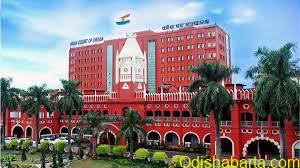WILL BHUBANESWAR’S OLDEST COLONIAL STRUCTURE BE RAZED TO THE GROUND (?).

Bureau,Odishabarta

Bhubaneswar 27th Nov: The Dak Bungalow of the Old Town, the earliest surviving colonial vestige of Bhubaneswar, is probably slated for demolition for the construction of a Kalyan Bhavan. Located at the western-most portion of the Ekamra Kshetra, the Dak Bungalow has an interesting history. It was built sometime in the late 1850’s for the convenience of British officers and was also the staging point for mail runners of the Imperial Mail Service. It also served as a makeshift courthouse for proceeding held by British officials. The many properties in the Old Town that were taken up by the gentry of Bengal under the draconian Sunset Law were auctioned at this place. It was also used by the surveyors of the Great Indian Trigonometrical Survey held between 1840-1870. The Bengal Nagpur Railways officials too camped here when the railway was being laid. It is just 500 metres from the railway line to Puri. It was converted into the Settlement office and remained as the R.I office for years before a new adjoining building was made.
The modest two-roomed bungalow was set in a thickly wooded plot with a well and two outhouses for the Khansama and Chowkidar. The large walled compound was dotted with trees, many fruit-bearing and others for shade. Just a single tamarind tree remains. The Dak Bungalow was renovated during the visit of Lord Curzon in 1899; it was from here that he went to the Curzon Tower to view the Lingaraj Temple. The place has been known as the Dakabangala Chhak for ages. Old-timers tell of the times when leopards would come and rest in the verandah.
Thespian actor and dramatist Ananta Mahapatra recalls the days when his family spent their holidays at this Dak Bungalow. His memoirs of the rest house date back to 1947. He used to visit the rest house with his father Justice Harihar Mahapatra and mother during the summer vacations. “My parents used to spend some days during the vacation. There was no road connection except for the summer season, when we would drive up from Cuttack, cross river Kathajodi and Kuakhai to approach the Dak Bungalow from the aerodrome area. During the monsoon, we would take a train to reach the old Bhubaneswar station. We would take a bullock cart to reach the Dak Bungalow. There were no rickshaws at that time. Only a few, hand-pulled rickshaws appeared a little later,” he recalls.
Today, the building that has been witness to so much history and has survived the vicissitudes of time lies neglected. Locals believe that the place is haunted and it has its share of strange paranormal happenings. Some old-timers recollect that there were two graves of Englishmen inside the compound, however, no trace of them can be found. A portion of the Dak Bungalow was razed a few years back to build a small office of the Revenue Inspector.
The other half is ruined. Broken walls, wild vegetation creeping in through the windows and filth are all that one could see on the premise of a structure that is historically significant.
A team from INTACH had inspected the place two years ago and found it to be structurally intact. Anil Dhir, the Convener of INTACH’s Bhubaneswar Chapter says that several letters have been written to the government to restore the Dak Bungalow. The thick walls and the wooden roof beams are undamaged; the building can be easily restored with some conservation efforts. Even the outhouses and the horse stable are in a restorable condition. Built of thick laterite stone blocks and chunsurkhi, the walls have little damage except for the peeling plaster.
Dhir says that he has discovered several accounts of Britishers who stayed here for months, convalescing from diseases like malaria and tuberculosis. Many physicians of Calcutta would recommend patients to go to Bhubaneswar and imbibe the therapeutic mineral water of the well inside the Kedar Gouri temple complex. It was believed that the water had curative and rejuvenating properties. A two-storied sanatorium had been made near the present-day Ravi Talkies, which too catered to the convalescing Britishers. Unfortunately, it was demolished ten years ago and a block of flats has come up at the place.
Amiya Bhushan Tripathy , Intach’s State Convener is of the opinion that the structure can easily be restored and can be used as a museum and interpretation centre of the various artifacts of the Old Town. INTACH will soon be sending a proposal to the government in this regard.






